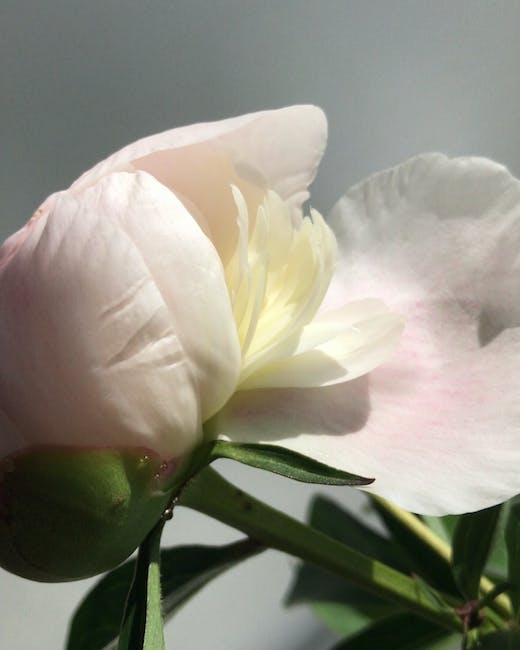The Power of Camellia Sinensis Rosea: The Pink Tea with Antioxidant and Anti-Aging Benefits
If you’re a tea lover, chances are you’ve heard of green tea, black tea, and maybe even white tea. But have you heard of Camellia Sinensis Rosea, also known as Rose Tea? This tea is made from the leaves of Camellia Sinensis plants that have a pinkish hue due to the presence of anthocyanins. And these anthocyanins are not just for show they are powerful antioxidants that have been linked to various health benefits.
Here are some of the reasons why you should consider adding Camellia Sinensis Rosea to your tea collection:
1. High in Antioxidants
Antioxidants are compounds that help protect cells from damage caused by free radicals. Camellia Sinensis Rosea is believed to have higher levels of antioxidants compared to other types of tea made from the same plant, such as green tea or black tea. Drinking Camellia Sinensis Rosea tea may help increase antioxidant levels in the body, leading to a reduced risk of oxidative stress and related health problems.
2. Anti-Aging Properties
In addition to its antioxidant properties, Camellia Sinensis Rosea is also believed to have anti-aging properties, due to its high content of polyphenols. Polyphenols are another type of antioxidant that have been shown to protect against skin damage caused by UV radiation, as well as improve skin elasticity and hydration. This can help prevent wrinkles and other signs of aging.
3. Improved Digestion
Camellia Sinensis Rosea has been found to have digestive benefits, as it can help soothe the digestive system and reduce inflammation. This can lead to improved digestion and a reduced risk of digestive problems such as bloating and constipation.
4. Potential Cancer Prevention
While more research is needed to confirm its effects, Camellia Sinensis Rosea has been found to have potential cancer-preventing properties. Its high antioxidant content may help protect against the development of certain types of cancer.
How to Enjoy Camellia Sinensis Rosea
Camellia Sinensis Rosea can be enjoyed in the same way as other types of tea simply steep the leaves in hot water for a few minutes, and enjoy! You can also add milk, honey, or lemon to taste.
Conclusion
Camellia Sinensis Rosea may not be as well-known as other types of tea, but it certainly deserves a spot in your tea collection. With its high antioxidant and anti-aging properties, as well as potential digestive and cancer-preventing benefits, this pink tea is definitely worth a try. So why not brew yourself a cup and reap the many health benefits of Camellia Sinensis Rosea?
If you’re a tea lover, you might have heard of Camellia Sinensis Rosea, also known as rose tea or rose black tea. This type of tea is made from black tea leaves that are scented with rose petals or rose oil, giving it a unique and delicate flavor profile. But how do you brew the perfect cup of Camellia Sinensis Rosea? Here are some tips and tricks to help you achieve the best possible taste and aroma.
1. Pay attention to water temperature
The ideal water temperature for brewing Camellia Sinensis Rosea is around 190-200F (88-93C). Boiling water can scorch the tea leaves and result in a bitter taste, while water that is too cool may not extract enough flavor from the leaves. To achieve the right temperature, you can either use a thermometer or simply let the water cool down for a few minutes after boiling.
2. Steep for the right amount of time
The steeping time for Camellia Sinensis Rosea is typically 3-5 minutes. Steeping for too long can also result in a bitter taste, while steeping for too short may not fully extract the flavor and aroma of the tea. To ensure the perfect balance, set a timer and remove the tea bag or infuser once the time is up.
3. Use high-quality water
Water quality is also important for brewing Camellia Sinensis Rosea. Using filtered or bottled water can help remove any impurities that may affect the taste of the tea. Hard water with high mineral content may also affect the taste, so it’s best to use soft water if possible. If you’re not sure about the quality of your tap water, you can always buy a water testing kit or consult with a local water expert.

4. Experiment with ratios and additives
While Camellia Sinensis Rosea is delicious on its own, you can also experiment with different ratios and additives to create your own unique blend. For example, you can add a splash of milk or cream to create a creamy and indulgent tea, or add a drizzle of honey or agave syrup for a touch of sweetness. You can also mix Camellia Sinensis Rosea with other types of tea, such as green tea or jasmine tea, to create a complex and layered flavor.
5. Enjoy the experience
Lastly, don’t forget to enjoy the experience of brewing and drinking Camellia Sinensis Rosea. Whether you’re sipping it alone or sharing it with friends, this tea is a perfect way to relax, unwind, and indulge in a moment of self-care. So sit back, take a deep breath, and savor the delicate flavors and aromas of this beautiful beverage.
| Water Temperature | Steeping Time | Water Quality |
|---|---|---|
| 190-200F (88-93C) | 3-5 minutes | Filtered or bottled water, soft water |
Now that you know the secrets to brewing the perfect cup of Camellia Sinensis Rosea, it’s time to put your skills to the test. Whether you prefer it hot or iced, with milk or without, this tea is sure to become a new favorite in your collection. So go ahead, brew a cup, and enjoy the simple pleasures of life.
Discovering the Floral and Fruity Aroma of Camellia Sinensis Rosea Tea
Tea enthusiasts are always on the lookout for new and exciting blends to try, and Camellia Sinensis Rosea tea is a recent favorite. Made from the same plant as black, green, and white tea, this tea has a unique flavor profile that sets it apart from the rest.
Processing Method
Camellia Sinensis Rosea tea is processed differently from other teas made from the same plant. After the leaves are harvested, they are allowed to wither and oxidize slightly, which gives the tea its signature taste.
Floral and Fruity Aroma
One of the key characteristics of Camellia Sinensis Rosea tea is its floral and fruity aroma. The tea is often described as having a scent reminiscent of rose petals, apricots, and peaches.
Tasting Notes
When it comes to taste, Camellia Sinensis Rosea tea has a sweet, delicate flavor with a slightly astringent finish. The tea has a light, golden color and is often noted for its hints of honey, jasmine, and even a subtle smokiness.
Pairing with Desserts
The floral and fruity notes in Camellia Sinensis Rosea tea make it a popular choice for pairing with light, sweet desserts. This tea is also perfect for a refreshing afternoon tea break.
Conclusion
Camellia Sinensis Rosea tea is a unique and delicious tea that is worth trying for anyone who loves tea or is looking for a new flavor to add to their collection. With its floral and fruity aroma and delicate taste, it is sure to become a favorite among tea enthusiasts.
Discover the Delightful Flavor of Camellia Sinensis Rosea Tea
Are you a tea lover? Do you enjoy experimenting with flavors and incorporating tea into your cooking and baking? If so, you must try Camellia Sinensis Rosea tea. This delightful tea has a delicate, floral flavor that pairs perfectly with a variety of desserts and savory dishes. In this blog post, we will explore the versatility of Camellia Sinensis Rosea and share some exciting recipe ideas.
Tea-Infused Desserts
Tea-infused desserts are all the rage right now, and Camellia Sinensis Rosea is no exception. Its sweet, floral notes make it an excellent ingredient in recipes such as tea-infused macarons, cupcakes, and shortbread cookies. Here are some ideas to get you started:
- Camellia Sinensis Rosea Macarons – Infuse the tea into the cream filling of the macarons for a delicate, floral flavor.
- Camellia Sinensis Rosea Cupcakes – Add the tea to the batter or frosting for a unique twist on a classic dessert.
- Camellia Sinensis Rosea Shortbread Cookies – Add tea leaves to the dough for a crunchy texture and a subtle floral flavor.
Savory Dishes
Tea-infused dishes are not just limited to desserts. Camellia Sinensis Rosea can also be used in savory dishes, such as tea-infused rice or as a marinade for meats. Here are some ideas to try:
- Camellia Sinensis Rosea Rice – Infuse the tea into the rice for a fragrant and flavorful side dish.
- Camellia Sinensis Rosea Chicken – Use the tea as a marinade for chicken to add a unique flavor to your meal.
- Camellia Sinensis Rosea Salmon – Use the tea as a glaze for salmon to give it a sweet and floral flavor.
Cocktails and Mocktails
Camellia Sinensis Rosea can also be used to enhance the flavor of cocktails and mocktails. Its delicate flavor pairs well with a variety of spirits, making it a versatile ingredient. Here are some ideas to try:
- Camellia Sinensis Rosea Gin and Tonic – Infuse the tea into the gin for a unique twist on a classic cocktail.
- Camellia Sinensis Rosea Lemonade – Add the tea to your favorite lemonade recipe for a refreshing and flavorful mocktail.
- Camellia Sinensis Rosea Champagne Cocktail – Add a splash of the tea to champagne for an elegant and sophisticated drink.
Tips for Pairing Camellia Sinensis Rosea with Food
When pairing Camellia Sinensis Rosea with food, it is important to consider the flavors and aromas of both the tea and the dish to ensure a complementary pairing. Here are some tips to keep in mind:
- Pair the tea with dishes that have subtle flavors, such as fish or chicken.
- Avoid pairing the tea with spicy or bold-flavored dishes, as it may be overpowered.
- Experiment with different pairings to find what works best for your taste preferences.
Camellia Sinensis Rosea tea is a versatile ingredient that can be used in a variety of dishes, from sweet to savory. Its delicate, floral flavor adds a unique twist to any recipe. So why not give it a try and see what delicious creations you can come up with?


Leave a Reply